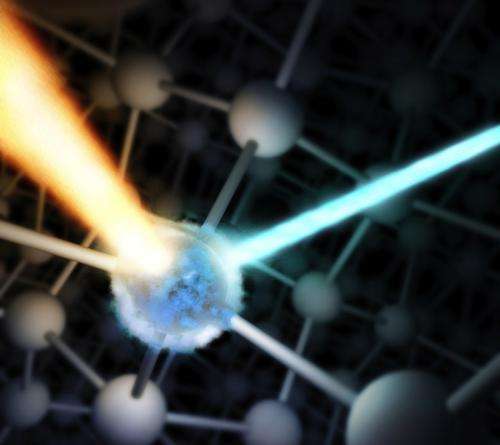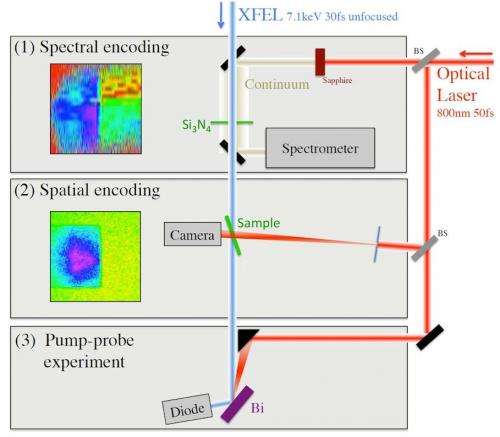New X-ray tool proves timing is everything

(Â鶹ÒùÔº)—With SLAC's Linac Coherent Light Source X-ray laser, timing is everything. Its pulses are designed to explore atomic-scale processes that are measured in femtoseconds, or quadrillionths of a second. Determining the instant in time at which the laser strikes a sample, either by itself or in concert with another laser pulse, can be vital to the success of an experiment.
In the Feb. 17 issue of Nature Photonics, researchers detail a new set of tools that better pinpoints the arrival time of X-ray and other laser pulses to within a few femtoseconds of accuracy.
"The development of such a timing tool as well as the demonstration of a few-femtosecond time resolution is opening a large field of applications in trying to resolve ultrafast dynamics in physics, chemistry and biology," said Marion Harmand of the German Electron Synchrotron (DESY) in Hamburg, Germany, the paper's lead author.
Many LCLS experiments rely on conventional laser systems, known as optical lasers, that excite and prepare samples in the instant before they are struck by the ultrabright, ultrafast X-ray laser pulses. These experiments are often referred to as "pump-probe." The optical laser pulse "pumps" the sample to a desired state, and the X-ray laser pulses serve as a high-resolution "probe" of the sample's properties at the molecular scale.
In the LCLS experiment conducted in December 2011, researchers installed two sets of timing tools to detect changes in samples using X-ray and optical laser pulses. The pulses were ultimately directed to a sample of bismuth metal, triggering atomic vibrations that provided a final test of the timing tools.

Creating those separate interaction points where the X-ray and optical laser pulses passed through and overlapped was a challenge, Harmand said. "This was like running three experiments in parallel."
Aspects of the experiment were demonstrated earlier in "soft" (lower-energy) X-ray experiments at the LCLS and at FLASH, an X-ray laser in Germany.
"For the first time we proved these timing tools can work in the hard X-ray regime, and can dramatically improve the accuracy of measurements," Harmand said.
Researchers sampled more than 15,000 sets of laser pulses, and the correlation in measurements from the separate timing tools provided the high degree of accuracy. Some of the tools used in the experiment have been adopted at several LCLS experimental stations.
New experiments are planned to explore other materials and operating conditions at LCLS that could benefit from the timing tools, the researchers noted.
More information:
Journal information: Nature Photonics
Provided by SLAC National Accelerator Laboratory




















